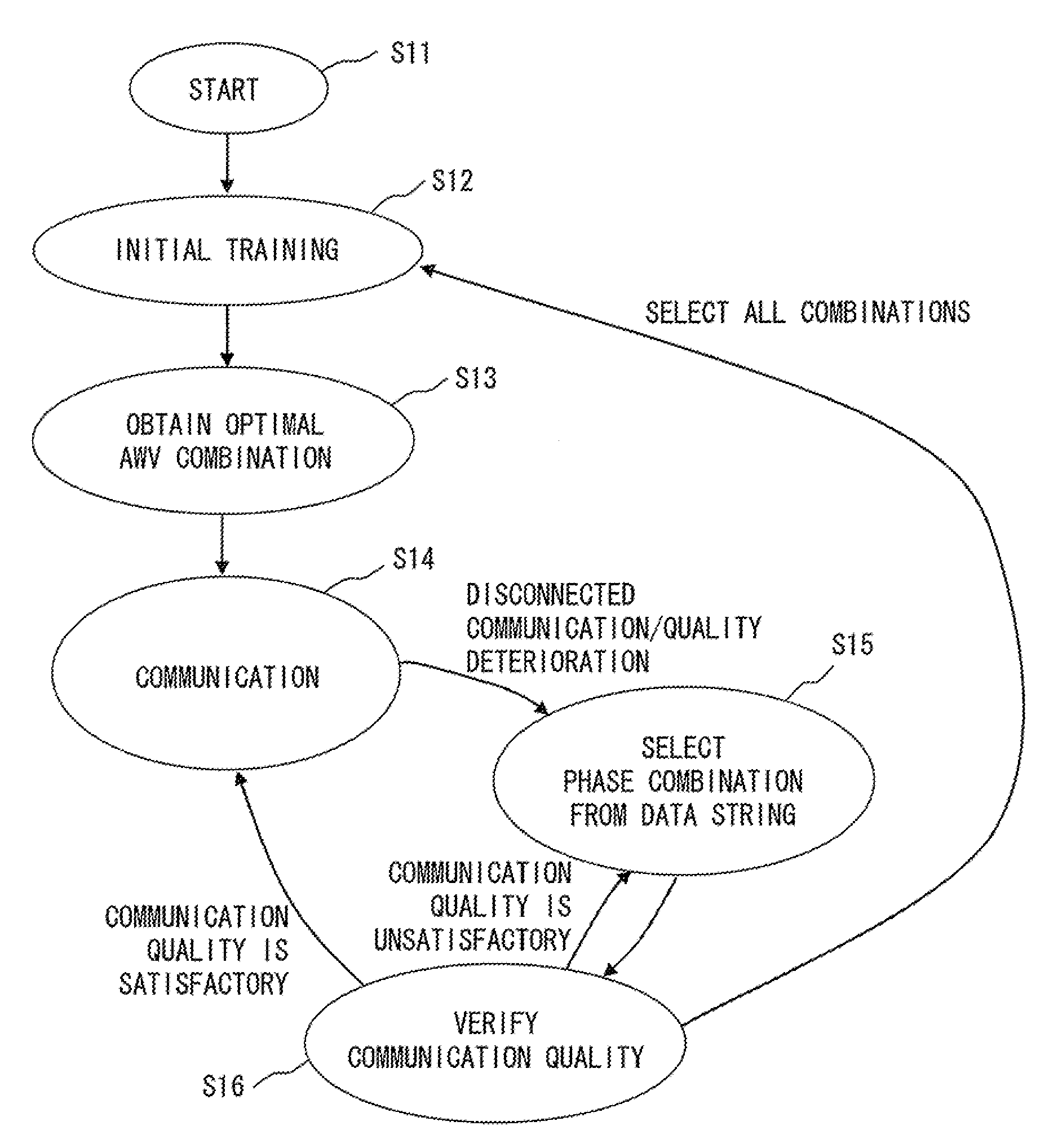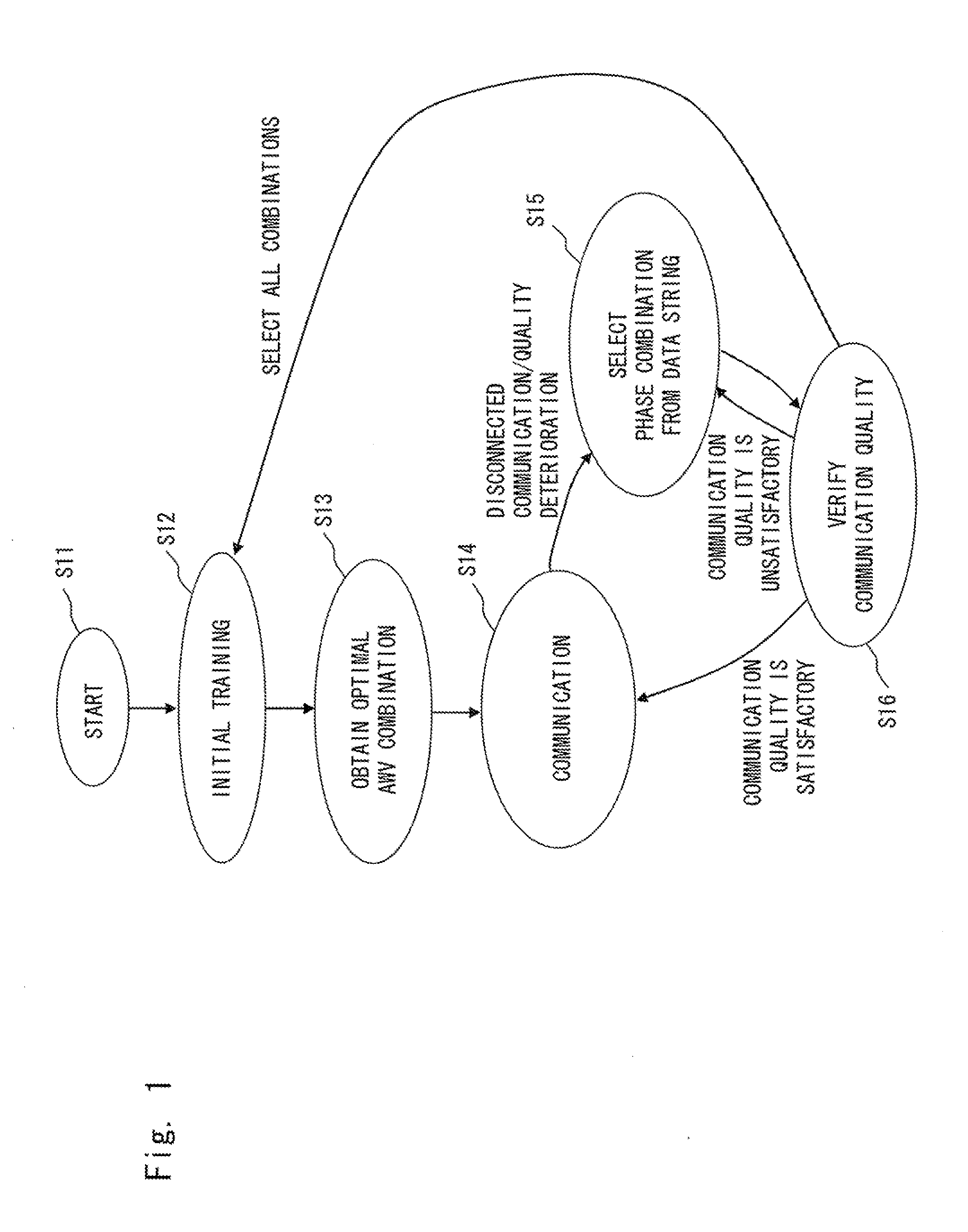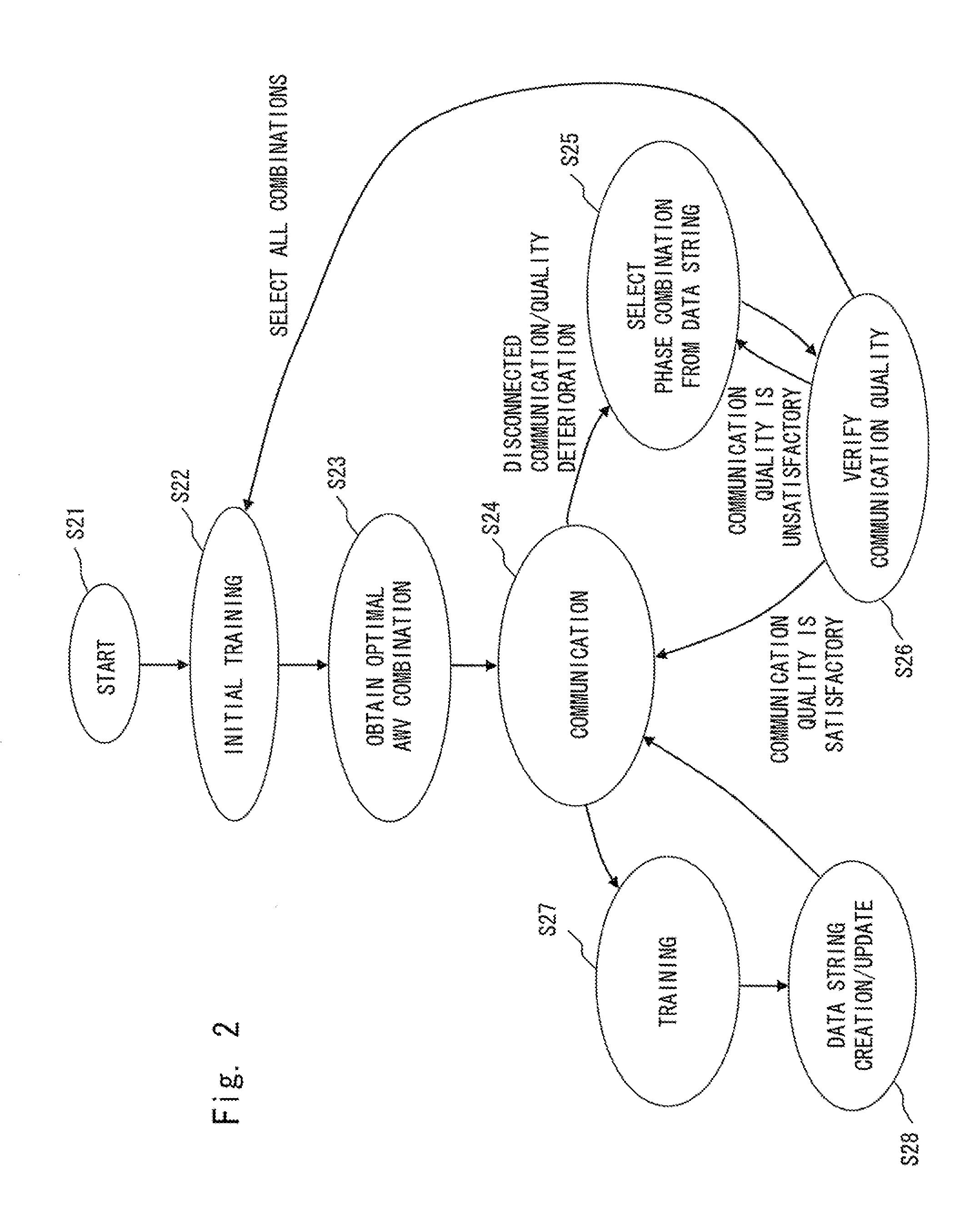Control method of wireless communication system, wireless communication system, adjustment method of array weight vector, and wireless communication device
a control method and wireless communication technology, applied in direction finders using radio waves, multi-channel direction-finding systems using radio waves, instruments, etc., can solve the problems of increased frequency, difficult transmission, and change in environment, and achieve the effect of suppressing adverse effects
- Summary
- Abstract
- Description
- Claims
- Application Information
AI Technical Summary
Benefits of technology
Problems solved by technology
Method used
Image
Examples
first exemplary embodiment
[0086]A first exemplary embodiment of the present invention is explained hereinafter with reference to a transition diagram shown in FIG. 1. It should be noted that a device configuration shown in FIG. 5, for example, can be used as the device configuration of the wireless communication system in accordance with this exemplary embodiment.
[0087]In S12 in FIG. 1, transceivers 400 and 500 perform initial training to optimize AWV control circuits 404-1 to M, 410-1 to N, 504-1 to K, and 510-1 to L installed therein. In S13, candidate AWV combinations are calculated by a process / arithmetic circuit 406 or 506 or by cooperation of these two circuits. The calculation method for candidate AWV combinations in S13 will be explained later. The obtained candidate AWV combinations are stored as a data string in both or either of the storage circuits 408 and 508.
[0088]In S14, one of the candidate AWV combinations obtained in the state S13 is selected, and communication is performed by using the sel...
second exemplary embodiment
[0138]A second exemplary embodiment of the present invention is explained hereinafter with reference to a transition diagram shown in FIG. 2. It should be noted that a configuration similar to that shown in FIG. 5 can be used as the configuration of a wireless communication system in accordance with this exemplary embodiment. Each of S21 to S26 and transition conditions therebetween are similar to S11 to S16 and their transition conditions shown in FIG. 1, which are described above with the first exemplary embodiment. Therefore, detailed explanation of S21 to S26 is omitted.
[0139]In S27 in FIG. 2, additional second training is performed after transition from the state (S24) where the communication is continued. The second training may be periodically performed, or may be performed during idle times in which there are no data to be transmitted / received.
[0140]In S28, the process / arithmetic circuit 406 and 506 calculate a plurality of candidate AWV combinations again. The process / arith...
third exemplary embodiment
[0144]A third exemplary embodiment of the present invention is explained hereinafter with reference to a transition diagram shown in FIG. 3. It should be noted that a configuration similar to the one shown in FIG. 5 can be used as the configuration of a wireless communication system in accordance with this exemplary embodiment. Further, the operations of the third exemplary embodiment are substantially the same as those of the second exemplary embodiment. That is, each of S31 to S38 and transition conditions therebetween are similar to S21 to S28 and their transition conditions shown in FIG. 2, which are described above with the second exemplary embodiment. Therefore, detailed explanation of S31 to S38 is omitted.
[0145]In this exemplary embodiment, when deterioration in the communication quality such as disconnected communication or the like occurs, the next candidate AWV combination is selected from the AWV combinations recorded in the database (S35) and fine adjustment is made in ...
PUM
 Login to View More
Login to View More Abstract
Description
Claims
Application Information
 Login to View More
Login to View More - R&D
- Intellectual Property
- Life Sciences
- Materials
- Tech Scout
- Unparalleled Data Quality
- Higher Quality Content
- 60% Fewer Hallucinations
Browse by: Latest US Patents, China's latest patents, Technical Efficacy Thesaurus, Application Domain, Technology Topic, Popular Technical Reports.
© 2025 PatSnap. All rights reserved.Legal|Privacy policy|Modern Slavery Act Transparency Statement|Sitemap|About US| Contact US: help@patsnap.com



